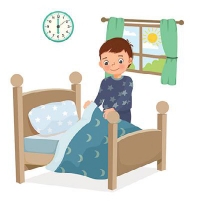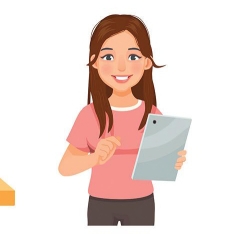Many children with ASD, experience incontinence due to the disconnect between the muscles in the bladder and the brain, leading to common delays in toilet training. While
this experience may not apply to all parents raising a child with ASD, for those who are seeking more nuanced instruction, begin with some of the starting points below.
GETTING THE JOB DONE: TOILET-TRAINING TIPS FOR CHILDREN WITH ASD
SET A CONSISTENT NIGHTTIME ROUTINE

Routine plays a vital role in toilet training. This includes: the same activities each night, patterns leading up to bedtime, and giving your child clear and consistent cues when it's nearly time to go to bed. For example, 30 minutes before bedtime, start some quiet activities, like tidying up or reading books. Some parents may even opt to use timers during this period. Forming a pattern leading up to bedtime will start to make connections for your child that this is also a time to void. Introduce a new pattern to your child, to void one last time before being tucked in. While voiding right before bed does not guarantee there will be no accidents that night, it can help reduce the size of accidents, and introduce a healthy sleep hygiene habit.
KEEP TRACK OF YOUR CHILD'S NORMAL BATHROOM ROUTINE

If possible, keep a journal of how often your child goes to the bathroom throughout the day. This includes: what time they went, how much, and any other relevant details. Knowing roughly when and how your child uses the bathroom will give you an idea of when they might need to go again. This allows you to remind them that it may be time to use
the restroom, before an accident occurs. If your child attends school or daycare during the day, ask if the teachers or aids could keep track of this, or when you pick up your child, check in to see the last time they voided at school. Tracking your child's bathroom breaks is not an exact science, but can serve as an orientation point for your bathroom schedule, for the remainder of the day. Don't forget to include your child in this activity, as well! Sticker charts or drawing in the journal will help your child feel a part of this routine, and have autonomy in toileting decisions.
FOCUS ON LIQUID AND FOOD INTAKE
Parents can provide their children with a healthy diet full of fluids and fiber in order to avoid constipation or worsening bladder issues. Consider getting a child-size water bottle, and encouraging your child to bring it along with them, throughout the day taking sips. By keeping your child hydrated with a water bottle, you are also encouraging good bladder health practices, and increasing the likelihood that they will have to void when prompted. It's important to stay away from highly sugary or caffeinated drinks, such as: juice, chocolate milk, tea, or soda, as these do not hydrate as well as plain water. Consider adding some fruit to make the water more flavorful, but don't cut the pieces too
small, to avoid choking. If your child is having bowel-related problems, ensure that they are consuming enough dietary fiber to stay regular. Don't forget to incorporate the use of probiotics daily, to establish healthy gut bacteria for improved bowel movements. If the problem persists, it may be time to consult a dietician or nutritionist. Pelvic floor physical therapists can also serve as support for behavioral techniques during toileting.

WHERE TO TURN FOR EXTRA RESOURCES AND SUPPLIES
There are various products and devices to assist a child with ASD, with toilet training. For starters, diapers and training underwear come in all sizes. Despite your child's age, there are diapers and training pants available in a size comfortable for them. If your child uses flashcards or visual supports in their communication, be sure to have a clear card or image for using the bathroom. As previously mentioned, the use of a bathroom journal, in addition to a food and drink journal, can help with tracking your child's bathroom use, as well as, food and liquids consumption. Sometimes, the best learning tools are books and stories. With no shortage of toilet-training books on the market, feel free to incorporate story time into your toilet training.

IN CONCLUSION
Toilet training is a natural part of childhood. For parents raising a child with ASD, toilet training can take longer, with testing periods of different patterns and practices. Don't forget, toilet training regression is completely normal and natural. Toilet training, like learning the colors, eating vegetables or brushing hair, will look different for every family and every child.
Experimenting and patience are key. If your child's toilet-train
ing difficulties persist, consider meeting with a urologist to explore options available. Supporting your child during the process can be hard and frustrating. Be sure to surround yourself with people that will support you and your self-care. •
ABOUT THE AUTHOR:
Aleece Fosnight, MSPAS, PA-C, CSC-S, CSE, NCMP, IF, HAES is a board-certified physician assistant specializing in urology, and a Medical Advisor for Aeroflow Urology (aeroflowurology.com).